Living with chronic pain can be a debilitating condition that can have a large effect on a patients emotional and psychological wellbeing. Pain is a subjective experience that affects each and every person differently. Here at the Illinois Spine Institute, pain treatment plans are uniquely tailored for each patient based on their individual needs and underlying conditions. Treatment may include both surgical and non-surgical options including interventional procedures, opioid and non-opioid (adjuvant) medication management, physical therapy, behavioral therapy, and complementary/alternative techniques.
The physicians at the Illinois Spine Institute believe in a multidisciplinary approach to pain management encompassing multiple specialties including spinal surgeons, interventional pain specialists, and physical therapists on site. Pain management treatment plans always include the most up to date, cutting edge, evidence-based techniques. Patient centered care is of utmost importance at the Illinois Spine Institute, with knowledgeable decision making by the physician and patient together. Treatment is always done by a board certified, highly trained, specialized practitioner.
Regardless of where a patient is experiencing pain, the Illinois Spine Institute can provide personalized pain therapies. No patient should have to live with chronic pain, regardless of the underlying cause or location. We strive to provide the highest quality of care to each patient, with an emphasis on functionality.
Treatments
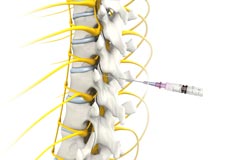
Epidural Steroid Injection (ESI)
Epidural Steroid Injections (ESI) are corticosteroid injections into the epidural space of the spinal column used to decrease pain and inflammation. ESIs can be performed in the cervical, thoracic, and lumbar spine. These are often used to treat radicular pain which is pain that radiates from the spine down an irritated spinal nerve root.

Spinal Cord Stimulation (SCS)
Spinal Cord Stimulators (SCS) are surgically implanted devices which transmit small amounts of electrical current to the affected spinal nerves. This innovative treatment works by changing pain signals that travel up through the spinal cord to the brain. Placed near the spinal cord in the epidural space, the spinal cord stimulator device delivers low-level electrical impulses to the spinal cord or to specific nerves that interfere with the perception of pain, especially chronic nerve pain.
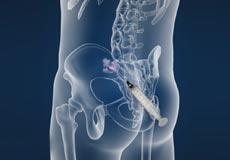
Sacroiliac (SI) Joint Injection
A Sacroiliac Joint (SI) Injection is an injection of local anesthetic and a steroid medication into the sacroiliac joint. Due to the numbing medicine used during this procedure, you may experience temporary pain relief afterwards that may last several hours. The steroid medication may give longer lasting pain relief and usually begins working after 24-48 hours.
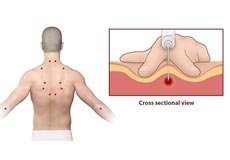
Trigger Point Injection
A Trigger Point Injection (TPI) is an effective treatment for inactivating trigger points, and providing prompt pain relief from myofascial pain syndrome. Trigger points are often tender, firm knots embedded within the muscle tissue that can be felt on examination. The pain one feels from pressing on a trigger point usually radiates in a region that is away from the trigger point. Trigger points are often located in the neck, shoulders (trapezius), low back, and buttocks.
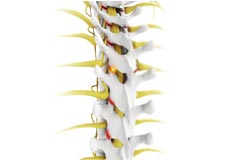
Medial Branch/Facet Block
Each vertebra in the spine is connected by two facet joints, one on each side, which is supplied by the medial branch. For both neck and back pain believed to be originating from these joints, a Medial Branch/Facet Block can be both diagnostic and therapeutic. The injection can confirm whether the facet joint is the source of low back or neck pain and relieve the pain/inflammation by disrupting the pain signal sent to the brain.
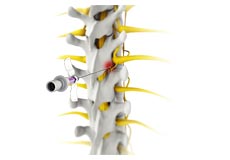
Radiofrequency Ablation (Rhizotomy)
Radiofrequency Ablation (RFA) is a procedure in pain medicine that uses a specialized device to reduce pain. RFA uses an electrical current produced by a radio wave to heat up a small area of nerve tissue, with the objective of decreasing pain signals from that area. Effective for many months to years, the goal of radiofrequency ablation is to prolong relief sustained by medial branch/facet blocks and other diagnostic procedures such as sacroiliac joint injection and genicular nerve blocks.

Genicular Nerve Block
A Genicular Nerve Block is an injection of a local anesthetic to block the nerves that transmit pain from the knee. The knee joint is surrounded by several nerve branches, known collectively as the genicular nerves. A genicular nerve block can be both a diagnostic and a therapeutic procedure to determine if the pathologic changes (i.e. arthritis, meniscal tears, etc) and inflammation within the knee joint is the source of your knee pain.
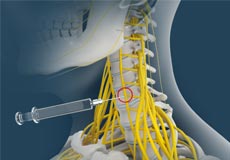
Stellate Ganglion Block
A stellate ganglion block is used to diagnose and/or treat circulation problems and nerve injuries. The block is performed by injecting local anesthetic in the sympathetic nerve tissue of the neck, which supply’s the arms. This may in turn reduce pain, swelling, color and sweating changes in the arms, and may improve mobility.
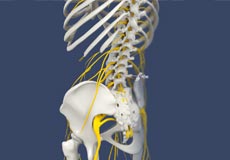
Lumbar Sympathetic Block
A lumbar Sympathetic Block is performed to block the sympathetic nerves that go to the leg on the same side as the injection. This may in turn reduce pain, swelling, color changes, sweating and other unusual changes in the lower extremity; it may also improve mobility. Sympathetic nerves are located on both sides of your spine, in your low back. A steroid medication and local anesthetic injected into and around your sympathetic nerves can help reduce pain in that area.

Selective Nerve Root Injection
A Sacroiliac Joint (SI) Injection is an injection of local anesthetic and a steroid medication into the sacroiliac joint. Due to the numbing medicine used during this procedure, you may experience temporary pain relief afterwards that may last several hours. The steroid medication may give longer lasting pain relief and usually begins working after 24-48 hours.

Genicular Radiofrequency Ablation
Genicular nerve radiofrequency ablation is a minimally invasive procedure for the treatment of chronic knee pain from knee osteoarthritis. It is a new and innovative technique that decreases knee pain, improves joint function, and the quality of life in knee arthritis patients.

Hip Injection
Hip joint injections involve injecting medicine directly into the hip joint to diagnose the source of pain or treat pain due to conditions such as arthritis, injury or mechanical stress of the hip joint. Hip pain may be experienced in the hip, buttock, leg or lower back.

Greater Trochanteric Bursa Injection
A trochanteric bursa injection is a minimally invasive procedure in which medicine is injected directly into the trochanteric bursa in the hip joint using a thin needle and syringe to relieve pain and inflammation. The injection usually contains a combination of numbing medicine and cortisone (an anti-inflammatory agent). Trochanteric bursitis, also known as greater trochanteric bursitis or hip bursitis, is the main indication for a trochanteric bursa injection.
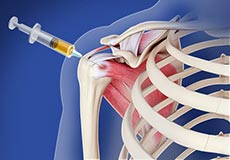
Shoulder Injection
The shoulder is prone to different kinds of injuries and inflammatory conditions. An intraarticular shoulder injection is a minimally invasive procedure to treat pain and improve shoulder movement. It may be performed with the help of ultrasound or fluoroscopic imaging which allows your physician to precisely target the intraarticular space.
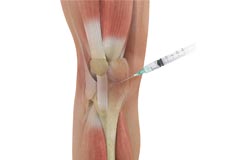
Knee Injection
Knee pain and stiffness can be disabling and difficult to treat. It can limit an individual’s lifestyle and negatively impact body image and emotional well-being
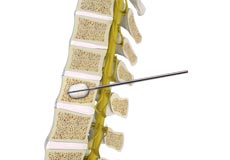
Kyphoplasty/Vertebroplasty
Osteoporosis is a “silent” disease characterized by the weakening of bones. This makes the patients more susceptible to fractures, typically in the hip and spine. The elderly and post-menopausal women are at a greater risk of developing osteoporosis.

Superior/Inferior Hypogastric Plexus Block
The hypogastric plexus is a bundle of nerves present near the distal end of the spinal cord. The nerves transfer pain impulses from the organs around the pelvic region, such as the bladder, rectum, descending colon, perineum, uterus, vagina, vulva, prostate, testes and penis.

Joint Viscosupplementation
Viscosupplementation refers to the injection of a hyaluronan preparation into the joint. Hyaluronan is a natural substance present in the joint fluid that assists in lubrication. It allows the smooth movement of the cartilage-covered articulating surfaces of the joint.

